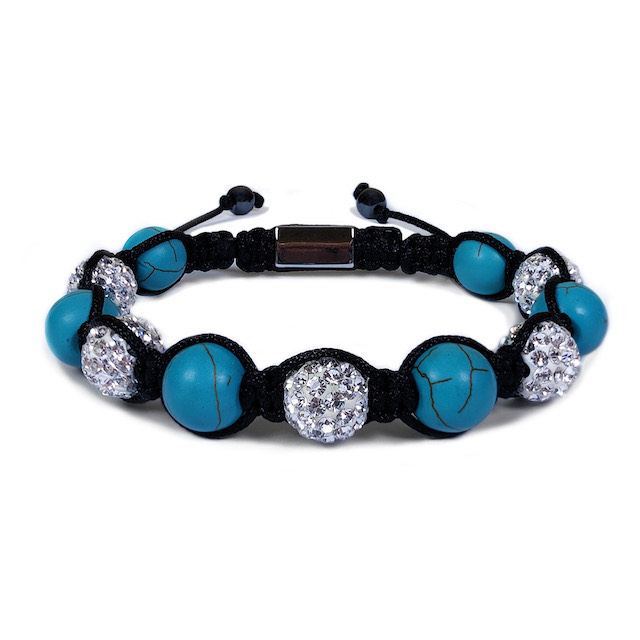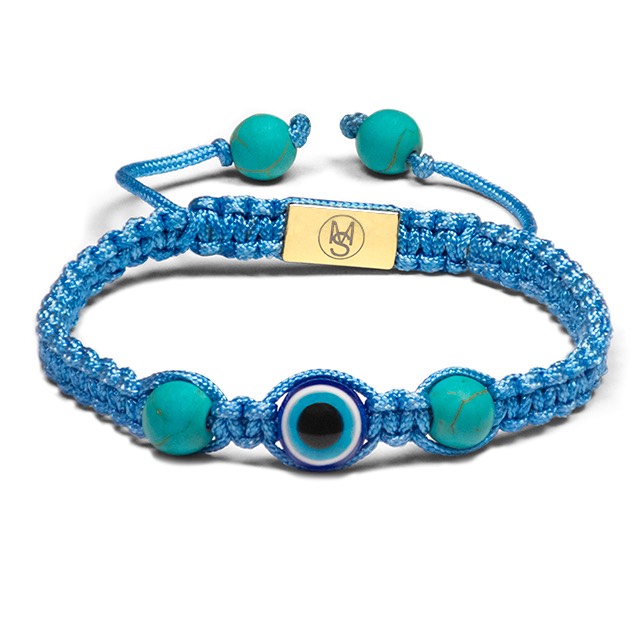Turquoise GemstoneMeanings, Properties, Facts & More
Turquoise is a gemstone that is known for its beautiful blue-green color. It is a hydrous phosphate of copper and aluminum, and its unique color is derived from the presence of copper in its chemical composition. Turquoise is often opaque or slightly translucent and has been valued as a gemstone for thousands of years. It has been used in jewelry and various decorative objects, and it is also considered a birthstone for the month of December. Additionally, turquoise is known for its cultural and historical significance in various societies and is often associated with protection, luck, and healing properties.
What Is Turquoise Gemstone?
Turquoise is a stone that comes in shades of blue and green, often with veins or matrix patterns of other minerals running through it. It is formed through a chemical reaction between copper and aluminum in the presence of water.
Turquoise Gemstone Meaning
Turquoise has been prized for its beauty and spiritual significance for thousands of years. It has been used in jewelry and adornments by ancient civilizations such as the Egyptians, Persians, and Native Americans. Turquoise is known for its calming and protective properties and is believed to promote inner peace, communication, and spiritual attunement. It is also recognized as a birthstone for the month of December.
Turquoise Gemstone Properties & Benefits
Turquoise is a gemstone that has been highly prized and cherished by various cultures throughout history. It is often associated with the following meanings and properties:
1. Protection: Turquoise is believed to be a protective stone that safeguards both the wearer and their possessions from negativity, harm, and accidents. It is said to create a shield of energetic protection and promote a sense of security.
2. Healing and Well-being: Turquoise is known for its healing properties, both physically and emotionally. It is believed to alleviate physical ailments, especially those related to the throat and respiratory system. Turquoise is also highly regarded for its ability to enhance overall well-being and strengthen the body’s natural healing abilities.
3. Communication and Expression: This gemstone is associated with clear communication and self-expression. It is believed to help in expressing oneself with confidence and authenticity, aiding in truthful and effective communication.
4. Balance and Harmony: Turquoise is believed to promote inner peace, balance, and harmony. It can help align the chakras, balance emotions, and bring about a sense of calmness and tranquility.
5. Spiritual Connection: Turquoise is often associated with spirituality and is considered a stone of wisdom and truth. It is believed to enhance intuition, increase spiritual insight, and promote a deeper connection with higher realms of consciousness.
6. Positive Energy and Happiness: Turquoise is thought to bring about positive energy, happiness, and good fortune. It is believed to lift one’s spirits, dissipate negative emotions, and attract joy and prosperity into one’s life.
History Of Turquoise Gemstone
The history of turquoise spans thousands of years and is intertwined with various cultures and civilizations. Here is a brief overview of the history of turquoise:
1. Ancient Times: Turquoise has been revered by many ancient civilizations for its unique and vibrant blue-green color. It was highly valued by the Egyptians, who considered it a symbol of protection, royalty, and divine power. Turquoise was used for jewelry, amulets, and decorative objects. It was also highly prized by the Persians, who believed that wearing turquoise could ward off evil and connect them to the heavens.
2. Native American Cultures: Turquoise holds significant cultural and spiritual importance for many Native American tribes. It has been used for centuries in jewelry, ceremonies, and as an offering in rituals. Turquoise was considered a sacred stone that brought good fortune, healing, and protection. In Navajo, Hopi, and Pueblo cultures, turquoise symbolized the sky, water, and fertility.
3. Medieval Period: During the Middle Ages, turquoise was highly sought after in Europe. It was imported from the Middle East and used in jewelry, religious art, and royal regalia. Turquoise was often associated with wealth, status, and protection against evil forces. In many European countries, turquoise jewelry became fashionable among the noble and elite classes.
4. Persian Influence: The Persians played a significant role in the trade and spread of turquoise throughout history. They were known for their intricate turquoise inlays and jewelry, creating breathtaking mosaics and architectural designs. The Persian region continues to be an important source of high-quality turquoise.
5. Modern Times: Today, turquoise continues to be treasured as a popular gemstone worldwide. It is featured in contemporary jewelry designs and is celebrated for its unique color and beauty. Turquoise mines are found in various regions globally, including the United States, Mexico, Iran, China, and Tibet.
The history of turquoise showcases its enduring allure and significance across cultures throughout time. Its vibrant color and spiritual symbolism continue to make it a sought-after gemstone by jewelry enthusiasts and collectors alike.
Discover Our Turquoise Gemstone Jewelry Collections

Crystalized Turquoise Bracelet
Select options This product has multiple variants. The options may be chosen on the product page

Turquoise Evil Eye Shamballa Bracelet
Select options This product has multiple variants. The options may be chosen on the product page